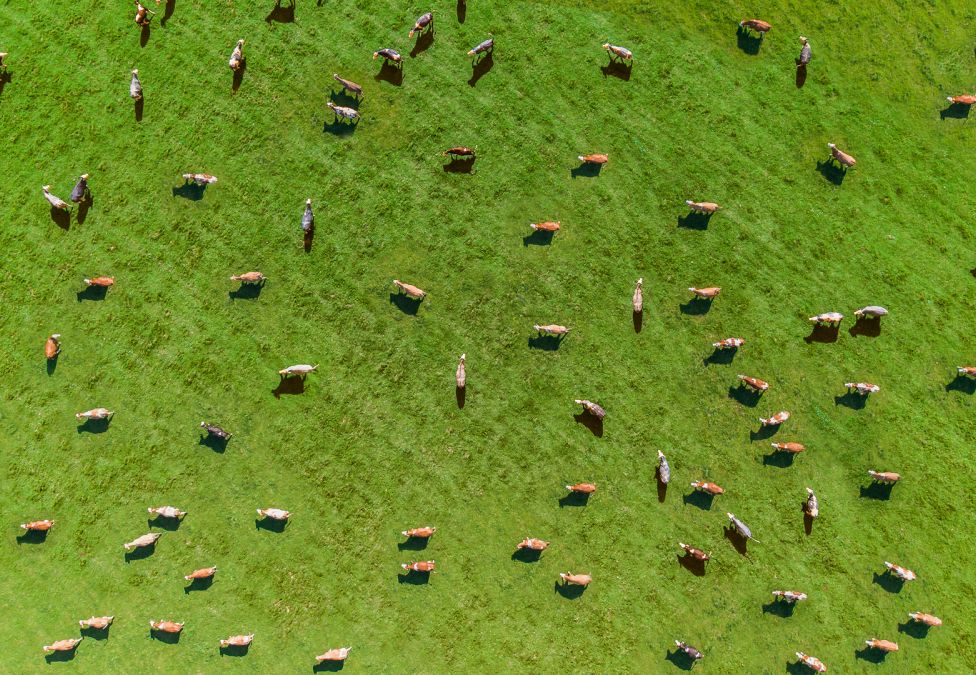
The transition to cleaner energy is in full force. Every day, we hear about companies and other organizations making announcements of a new technology with the hope of having a “major impact” on controlling harmful emissions and helping the world tackle climate change. We live in an exciting time where new ideas could allow our children and grandchildren to live in a world that is cleaner and more sustainable.
One of those ideas is beginning to gain momentum. Today, capturing the fugitive methane produced by livestock, especially dairy cows, and turning it into something useful like cleanly powering big vehicles, is more than a hope.
It takes many, many cows to make all the milk, cheese, yogurt, and other dairy products we consume every day. And those cows also produce something else in large quantities—poop. Unfortunately, that manure contains some of the most potent greenhouse gas emissions, which can do incredible harm to the atmosphere.
The transition to cleaner energy is in full force.
Fortunately, clean energy companies are now partnering with dairy owners and pouring hundreds of millions of dollars into building renewable natural gas (RNG) digesters at dairies across the country that collect the manure, capture the methane from it, and then inject the RNG into the interstate natural gas pipeline. The beauty of the RNG produced from cows’ manure is that it is the same on a molecular level as regular natural gas but without any of the drilling or fracking.
That is the first benefit of RNG.
The RNG molecules produced at dairies and injected into the pipeline are counted and verified by Environmental Protection Agency (EPA)-certified third-party firms. The RNG can travel and be used anywhere along the pipeline system, from a power plant to a home’s cooking stove. But it can also be used to power vehicles like city buses, waste collection trucks, and heavy-duty trucks. Today, the transit agencies in New York City, Los Angeles, and dozens of others are operating tens of thousands of buses every day on RNG, as well as Waste Management, Republic Services, and many more companies’ trash trucks. UPS, Amazon, and other logistics companies are operating thousands of heavy-duty trucks on clean fuel.
That is the second benefit of RNG.
Because RNG generates two benefits—1) keeping fugitive methane from escaping into the atmosphere at the source like dairies and 2) displacing a much dirtier incumbent fuel in heavy-duty vehicles, diesel—RNG receives one of the best emissions scores by the California Air Resources Board and EPA. In fact, the carbon-intensity score of RNG produced at dairies and turned into a transportation fuel is, on average, minus 330. Yes, that means it displaces more carbon than it uses—triple the amount. For instance, because an electric vehicle charged with electricity produced by wind or solar does not displace any emissions, it can never score better than zero.
There are additional benefits of RNG for the dairy operations, such as organic nutrients, reduced odor, and improved water quality. It also gives the owner an added steady revenue stream, which is helpful for an industry that can be challenging due to volatile milk pricing.
The world’s major energy companies like BP, Chevron, and TotalEnergies are investing in the production of RNG, while Cummins, the best-in-class manufacturer, is rolling out a new, larger engine that operates on RNG. Many of the headlines about the energy transition are about other alternatives, and that might have to do with the source of RNG—cow poop. It’s not necessarily a nice dinner conversation subject. But someday soon, the spotlight will shine very brightly on Bessie and many of her fellow dairy cows around the country that are producing renewable natural gas and already having a tremendous impact on our road to cleaner transportation.
















